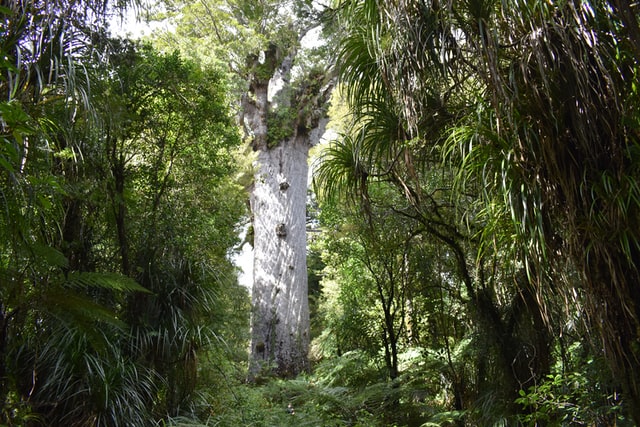The Minister for Conservation has launched a long-term strategy aiming to keep ecosystems resilient and varied.
Te Mana o te Taiao – The Aotearoa New Zealand Biodiversity Strategy sets five key goals to reach by 2050, with specific objectives and goals for 2025, 2030, and 2050. These include “getting the system right”, by improving science, data, and innovation systems, and incorporating mātauranga Māori in biodiversity research and management.
The SMC asked experts to comment on the strategy.
Dr Duane Peltzer, Chief Scientist of BioHeritage National Science Challenge and Senior Researcher at Manaaki Whenua – Landcare Research, comments:
“Te Mana o te Taiao, the New Zealand Biodiversity Strategy, was developed with input from a wide range of people, and it shows. Having three reference panels (Te Ao Māori, Science and Stakeholders) underscores the government’s commitment to Treaty partnerships, evidence-based approaches, and listening to a diverse range of voices.
“Despite this broad input to the strategy, there is a remarkable convergence in underpinning values across sectors of Aotearoa that bodes well for implementation of the strategy. Many knowledge gaps and ongoing issues are clearly identified in the Strategy, so it points the way for a focus for the science community.
“Achieving the overarching goal of reversing the decline in biodiversity of Aotearoa cannot be accomplished solely by better knowledge and informed action, but also requires system-wide support that empowers people and communities. The Strategy highlights three pou, or pillars, needed to make new progress towards reversing the decline – Tūāpapa, Whakahau, and Tiaki me te Whakahaumanu – which together emphasise the necessity of having the right systems, people, and actions in place.
“The devil will be in the detail: governance and implementation of the Strategy will be vital for the incoming government to get underway. And as ever, we will not reverse the decline without adequate support, resourcing and actions highlighted in the Strategy. Nevertheless this is a tremendous start.”
No conflict of interest.
Tame Malcolm, member of the BioHeritage National Science Challenge Strategic Leadership Group and Operations Manager for Te Tira Whakamātaki, comments:
“Ki taku nei titiro, kua kaha rā ngā kaituhi o te rautaki nei ki te herea Te Ao Māori ki roto nā. Ka mutu, nā tātau katoa tēnei rautaki i tuhi. Ko te whakamātau matua inainei mō tēnei tuhinga, kia whakatinana i ngā kupu ā roto.”
[Translation: “When I read the strategy, Te Ao Maori is weaved through it. As a result, it seems everyone had a hand in writing it. The true measure of success of it will be when the words are turned into action.”]
No conflict of interest.
Dr Julie Hall, Director, Sustainable Seas National Science Challenge, comments:
“I’m really pleased to see this latest strategy has a stronger focus on the marine environment, and that the goals of the strategy specifically include ecosystem-based management and cumulative effects. Cumulative effects are one of the most urgent and complex issues facing our coasts and oceans that can only be tackled with a national-level, holistic, ki uta ki tai approach.
“Marine spaces are too often ‘out of sight, out of mind’ despite the fact that they are home to almost 80% of Aotearoa New Zealand’s native biodiversity, and there are serious issues that must be addressed for the sake of New Zealand’s future. This is why we work in this area and it’s great to know our research can contribute to the goals of this strategy.”
No conflict of interest.
Carolyn Lundquist, Principal Scientist, NIWA, and Associate Professor, University of Auckland, comments:
“I applaud this strategy for its recognition that Nature is essential for human livelihoods, our cultural identities, human health, economic wellbeing and food security.
“The strategy recognises the urgency of halting declines in biodiversity in Aotearoa New Zealand, and is aspirational in its goal of ‘no net loss’ of areas of high biodiversity value.
“It also promotes the use of nature-based solutions to combating climate change. The solutions include the value of our forests (including ‘blue carbon’ – marine vegetation such as mangroves) for carbon storage and the role of coastal habitats for protection from storms and flooding.
“The strategy is underpinned by the He Awa Whiria (a braided river) approach, which recognises the multiple ways of knowing and understanding the natural world, including mātauranga Māori and scientific disciplines, that were used to develop this strategy.
“It recognises the necessity of reconciling the complexity of institutional practice and legislation concerning the management of biodiversity, and the need for an integrated whole of land and seascape (ki uta ki tai – mountains to the sea) approach to managing biodiversity.
“The strategy also recognises the contribution of the general public and community action groups to the conservation and restoration of biodiversity, and the need to ensure these groups are resourced, and have access to relevant information to facilitate their role as environmental stewards.
“In marine ecosystems, the strategy will benefit from new knowledge emerging from the Sustainable Seas National Science Challenge with respect to an ecosystem-based management approach to fisheries management, and in incorporating multiple stressors and cumulative effects within the design of a network of marine protected areas.
“Early goals of the strategy will address substantial information gaps required to fulfil the later objectives, including better understanding of the diversity of social, cultural, economic and environmental benefits that biodiversity provides to people.”
No conflict of interest.
